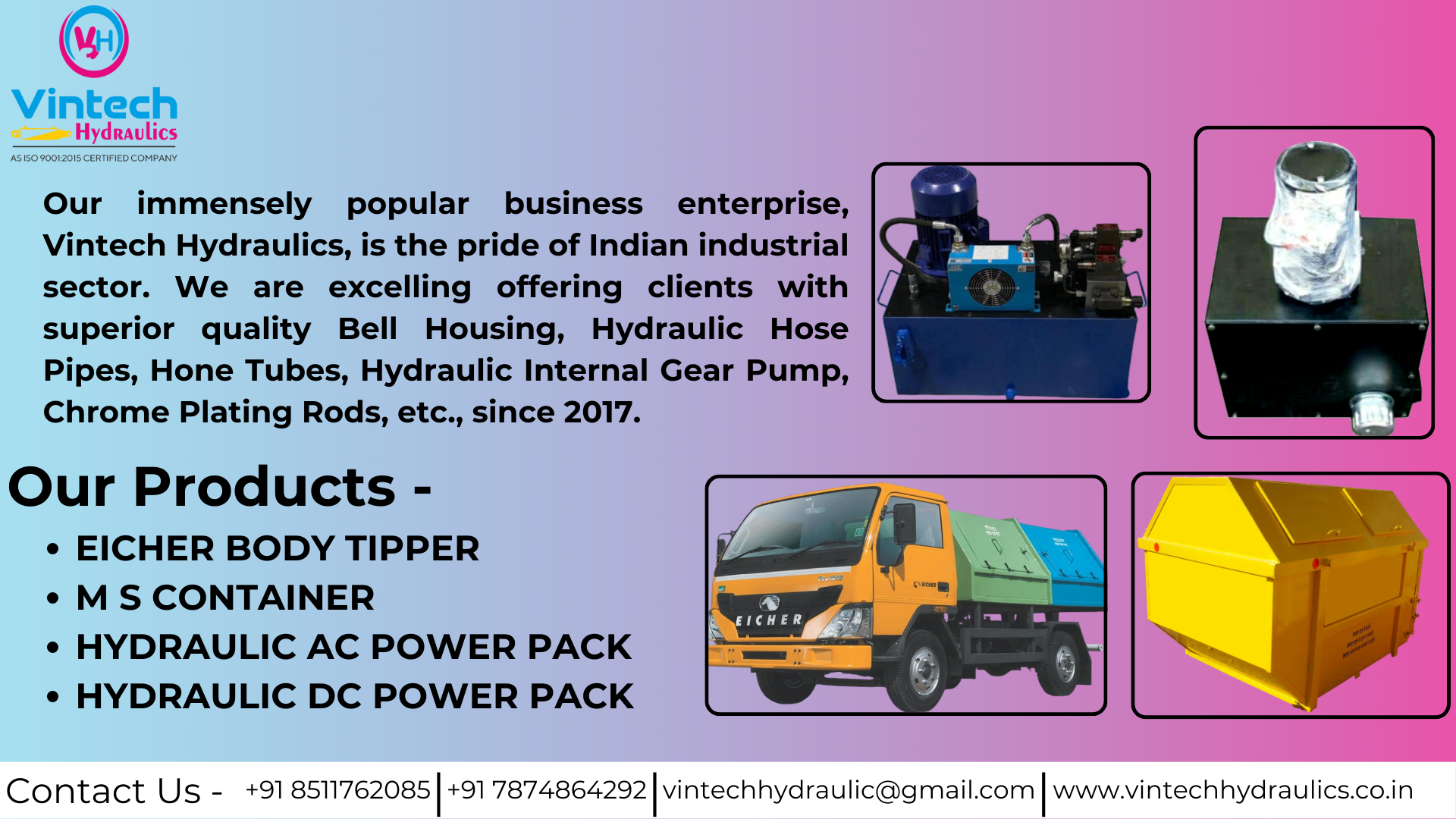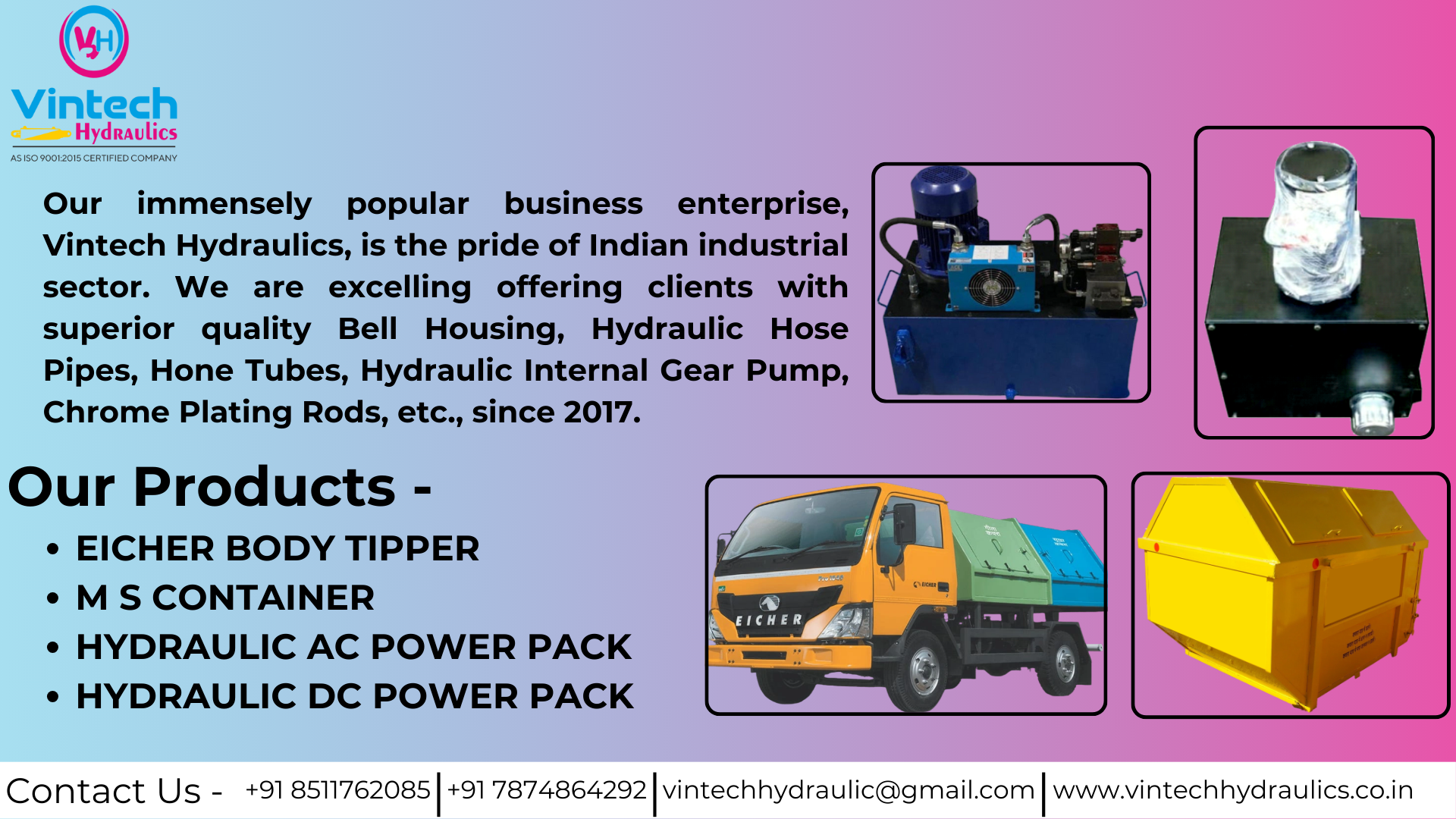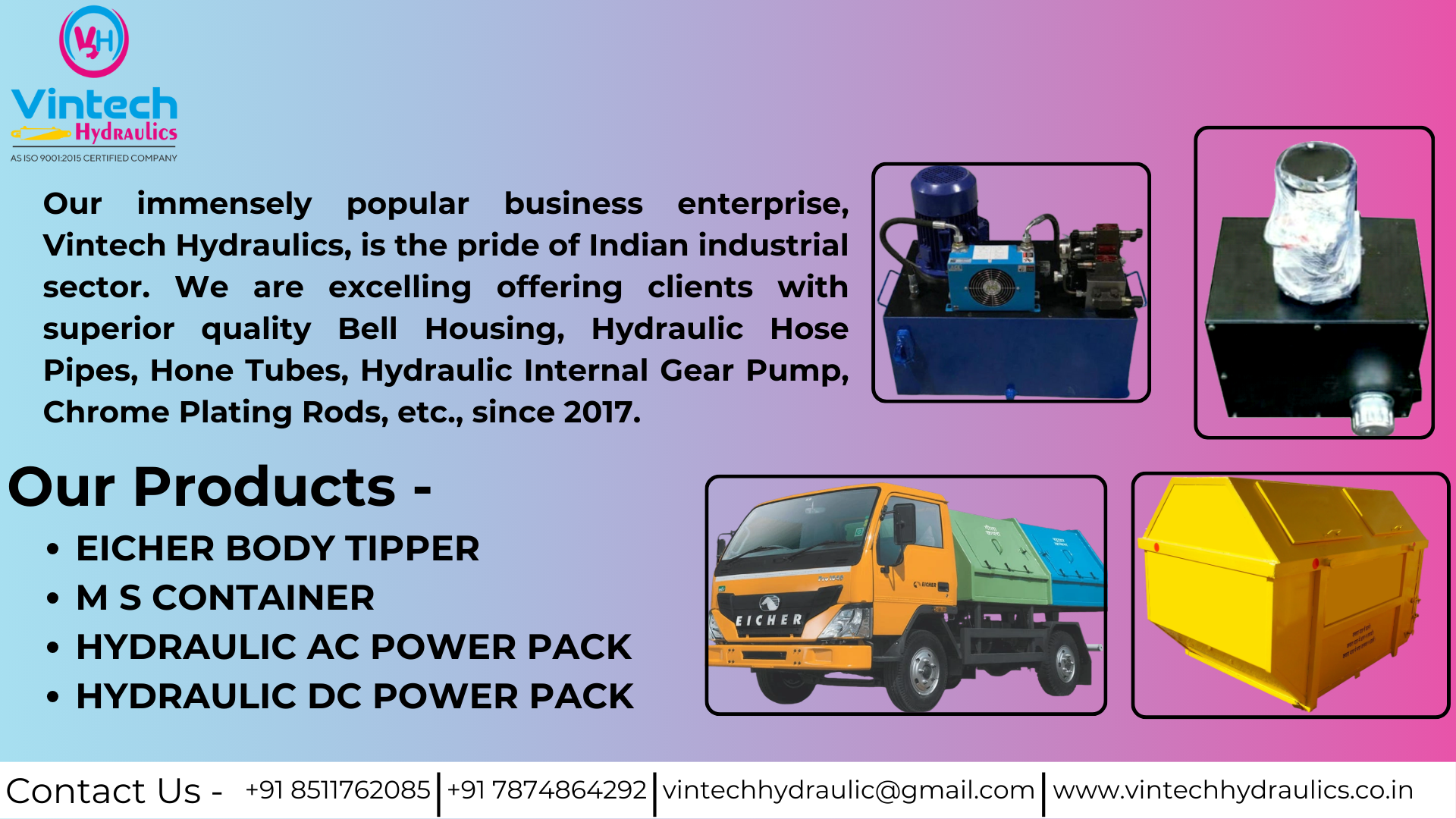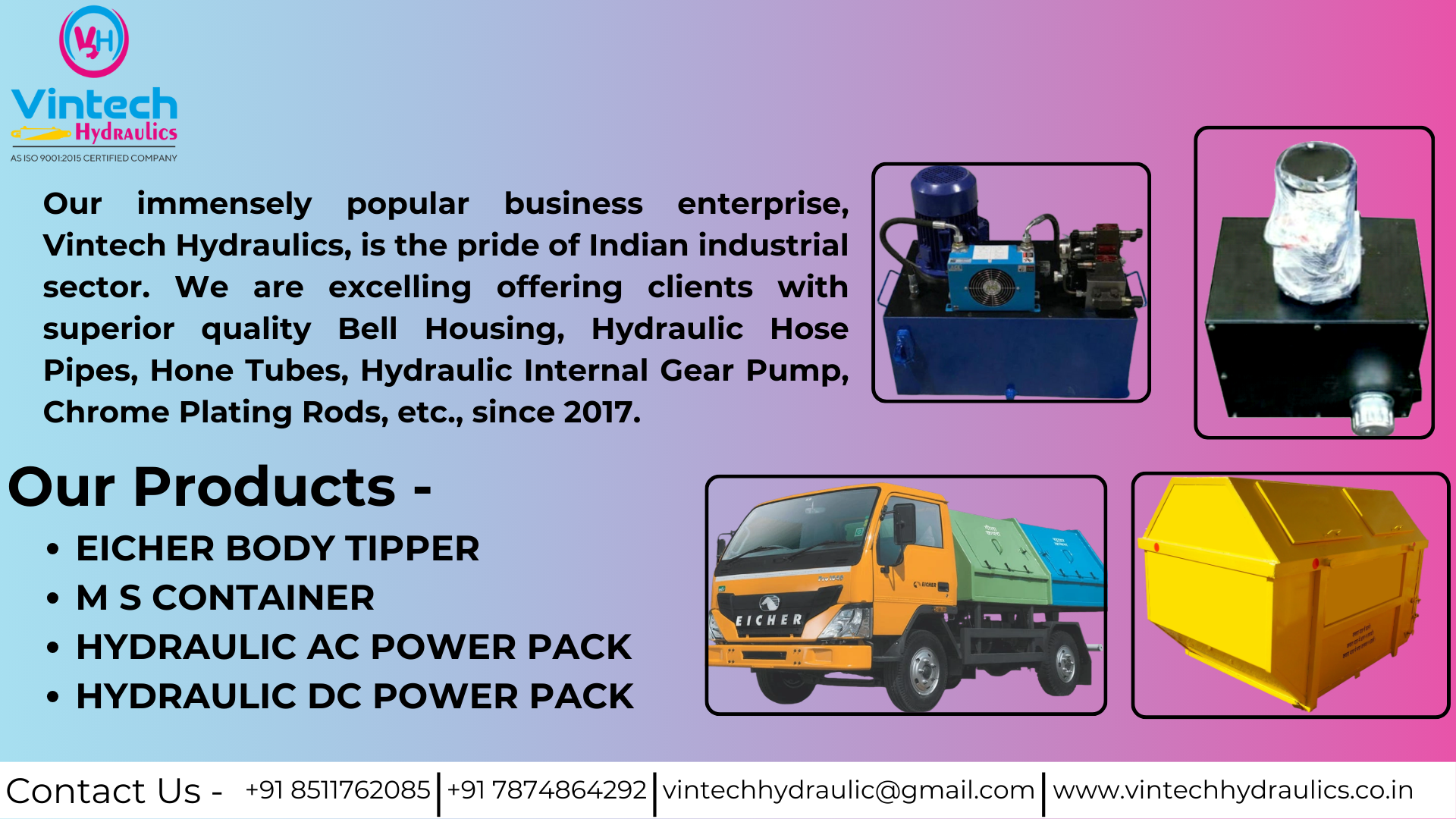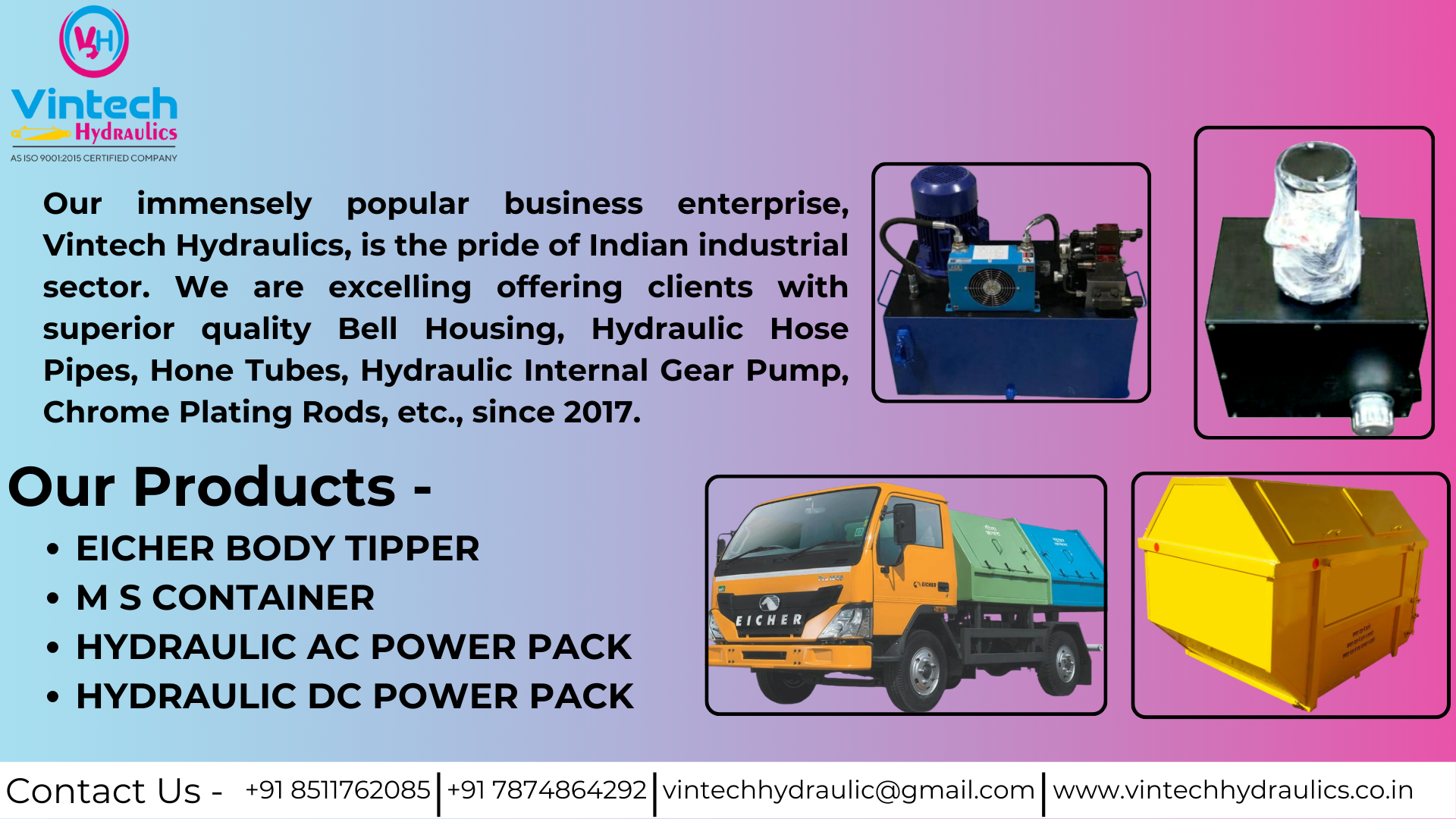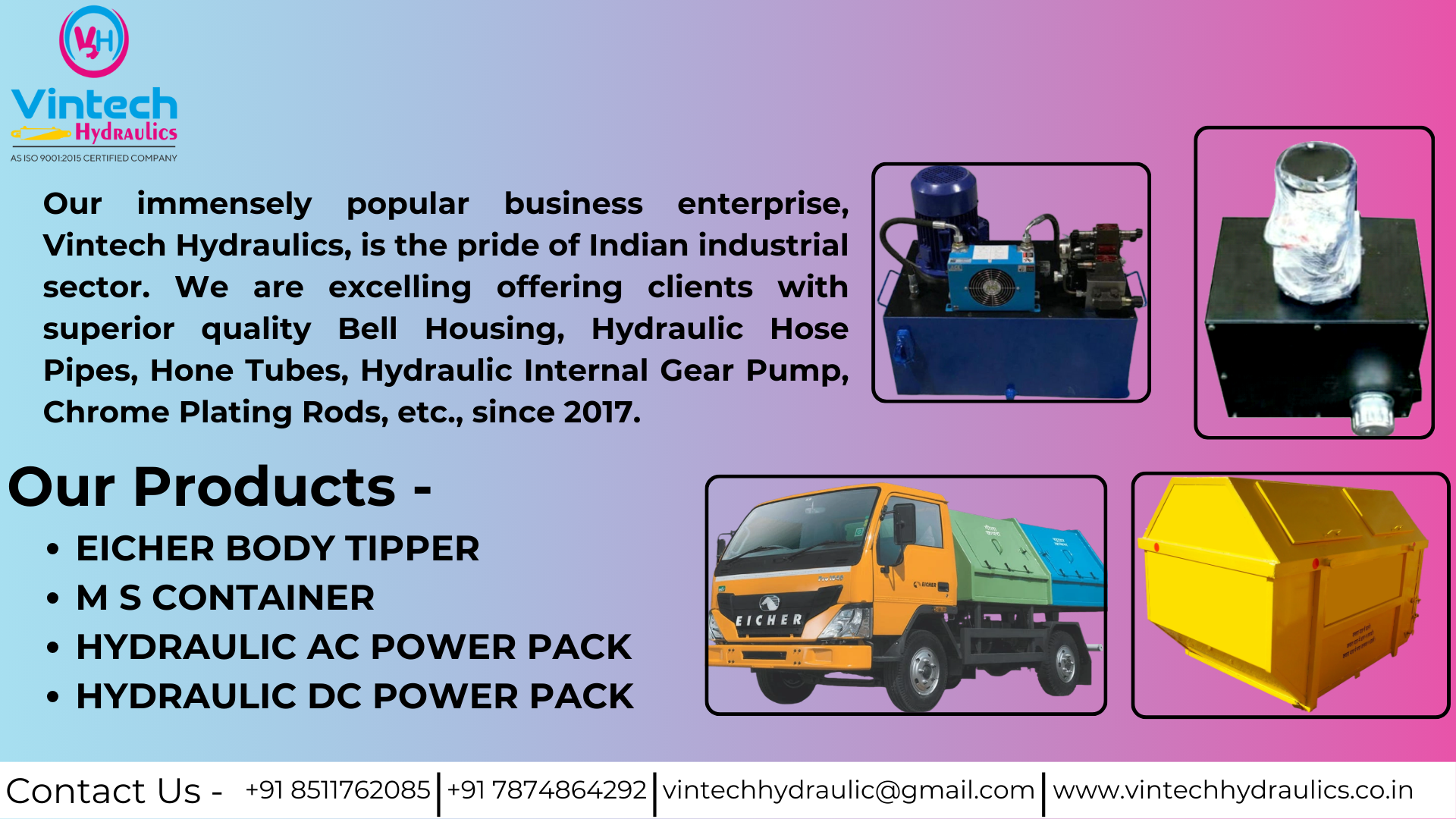
Double Acting Hydraulic Cylinder
Double Acting Hydraulic Cylinder
What is a Double Acting Hydraulic Cylinder?
A Double Acting Hydraulic Cylinder is a mechanical actuator that uses hydraulic pressure on both sides of the piston to extend and retract the piston rod. Unlike single-acting cylinders that move in only one direction by hydraulic force and return by spring/gravity, double-acting cylinders provide controlled force in both directions.
How It’s Made – Components & Manufacturing Process
Main Components
| Part | Function |
|---|---|
| Cylinder Barrel | Holds the pressurized hydraulic fluid |
| Piston | Separates the pressure zones in the barrel |
| Piston Rod | Connects the piston to external load |
| Rod Seal | Prevents leakage along the rod |
| End Caps | Seal the barrel ends and support mounting |
| Ports (A & B) | Allow fluid to enter or exit both sides |
| Bushings/Wear Rings | Reduce friction and wear during movement |
Manufacturing Process
-
Material Selection
Rod: Hard chrome-plated steel for wear resistance
-
Machining
-
Cylinder tube and piston are precision-machined for exact fit.
-
Honing
-
Inside of the barrel is honed to reduce friction and improve seal life.
-
-
Welding/Assembly
-
End caps welded or threaded onto barrel; piston is inserted with seals.
-
-
Testing
-
Pressure and leakage tests under high-load simulation.
-
-
Surface Finishing
-
Painting, powder coating, or plating for rust resistance.
-
Working Principle
-
Hydraulic fluid enters port A, pushing the piston to extend the rod.
-
To retract, fluid enters port B, pushing the piston in the opposite direction.
-
Both actions use hydraulic pressure, providing force in both directions.
-
Movement is smooth, controlled, and precise, suitable for push-pull operations.
Uses of Double Acting Hydraulic Cylinders
| Application | Description |
|---|---|
| Industrial Presses | Controlled pressing operations |
| Machine Tools | CNCs and automation arms |
| Earthmoving Equipment | JCB, dozers, cranes |
| Agricultural Machinery | Harvesters, ploughs |
| Injection Moulding | Clamp and ejector movements |
| Marine Equipment | Rudder control and deck operations |
| Elevators and Lifts | Vertical motion control |
Importance & Significance
1. Controlled Two-Way Movement
Ideal for operations where both push and pull actions are necessary with equal force.
2. Power & Precision
Provides consistent motion under high loads and varying conditions.
3. Industrial Standard
Used widely across all hydraulic systems in heavy-duty machinery and automation.
4. Safety and Load Holding
Works with hydraulic locks and control valves to hold position under load.
Advantages of Double Acting Hydraulic Cylinders
| Advantage | Benefit |
|---|---|
| Force in both directions | Perfect for symmetrical tasks |
| Higher speed control | Fine motion control in automation |
| Versatile Mounting Options | Flange, clevis, trunnion, tie-rod |
| Robust Design | Long service life under extreme conditions |
| Suitable for Automation | Compatible with sensors & control valves |
| Energy-Efficient | Uses power effectively in both strokes |
Where It Is Used
| Sector | Use Case |
|---|---|
| Construction | Excavators, bulldozers, pavers |
| Manufacturing | Presses, cutting machines |
| Agriculture | Planters, harvesters, tillers |
| Transport | Hydraulic tailgates, loading docks |
| Railway & Defense | Braking systems, simulators |
| Mining | Rock crushers, drilling machines |
| Aerospace | Landing gear & flight controls |
Frequently Asked Questions (FAQs)
Q1. What is the difference between single and double acting cylinders?
A: A single-acting cylinder uses fluid to move in one direction and a spring to return; a double acting cylinder uses fluid for both extend and retract motions.
Q2. What are typical operating pressures?
A: Commonly rated between 100 to 350 bar (1500–5000 psi).
Q3. Can I customize stroke length and bore size?
A: Yes. Most manufacturers offer custom stroke, rod diameter, and mounting.
Q4. Can it be used in vertical position?
A: Yes, with proper mounting and safety locking valves.
Q5. Is regular maintenance required?
A: Minimal maintenance is needed—mostly seal replacement and oil check.
Technical Specifications (Typical)
| Parameter | Range |
|---|---|
| Stroke Length | 50 mm – 3000 mm |
| Bore Size | 25 mm – 500 mm |
| Pressure Rating | 100 – 350 bar |
| Material | MS / EN8 / SS |
| Rod Coating | Chrome plated (25–50 micron) |
| Seal Type | Nitrile / Polyurethane / Viton |
Common Mounting Types
-
Clevis Mounting
-
Flange Mounting
-
Foot Mounting
-
Tie-Rod Construction
Conclusion
The Double Acting Hydraulic Cylinder is a powerful and precise actuator used across industries requiring bi-directional motion. It is an essential part of modern hydraulic systems, providing efficiency, durability, and control under demanding applications.
Its versatility makes it suitable for everything from industrial automation to construction equipment, ensuring reliable performance in both push and pull directions.
As automation and hydraulic control become more advanced, the double acting cylinder remains at the heart of fluid power applications, driving forward both innovation and productivity.
